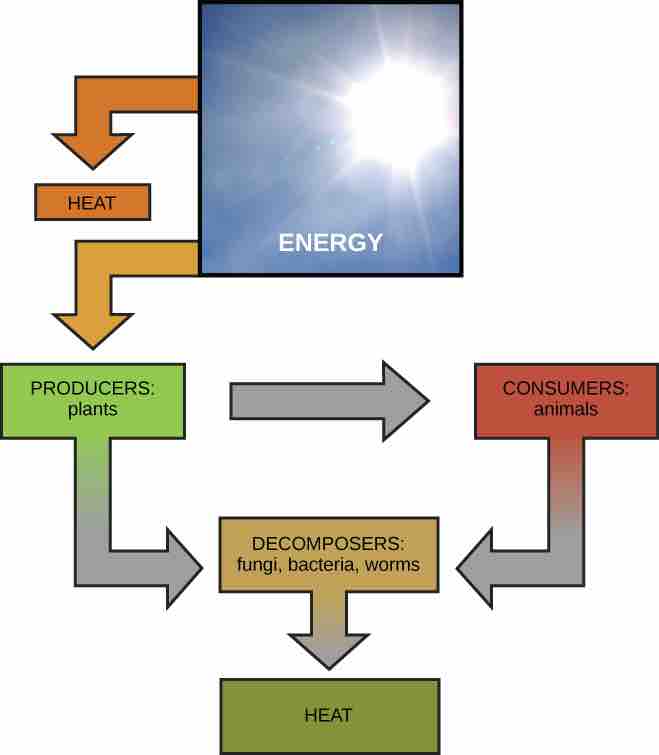Energy and Metabolism
All living organisms need energy to grow and reproduce, maintain their structures, and respond to their environments. Metabolism is the set of life-sustaining chemical processes that enables organisms transform the chemical energy stored in molecules into energy that can be used for cellular processes. Animals consume food to replenish energy; their metabolism breaks down the carbohydrates, lipids, proteins, and nucleic acids to provide chemical energy for these processes. Plants convert light energy from the sun into chemical energy stored in molecules during the process of photosynthesis.
Bioenergetics and Chemical Reactions
Scientists use the term bioenergetics to discuss the concept of energy flow through living systems such as cells. Cellular processes such as the building and breaking down of complex molecules occur through step-by-step chemical reactions. Some of these chemical reactions are spontaneous and release energy, whereas others require energy to proceed. All of the chemical reactions that take place inside cells, including those that use energy and those that release energy, are the cell's metabolism.

Most energy comes from the sun, either directly or indirectly
Most life forms on earth get their energy from the sun. Plants use photosynthesis to capture sunlight, and herbivores eat those plants to obtain energy. Carnivores eat the herbivores, and decomposers digest plant and animal matter.
Cellular Metabolism
Every task performed by living organisms requires energy. Energy is needed to perform heavy labor and exercise, but humans also use a great deal of energy while thinking and even while sleeping. For every action that requires energy, many chemical reactions take place to provide chemical energy to the systems of the body, including muscles, nerves, heart, lungs, and brain.
The living cells of every organism constantly use energy to survive and grow. Cells break down complex carbohydrates into simple sugars that the cell can use for energy. Muscle cells may consumer energy to build long muscle proteins from small amino acid molecules. Molecules can be modified and transported around the cell or may be distributed to the entire organism. Just as energy is required to both build and demolish a building, energy is required for both the synthesis and breakdown of molecules.
Many cellular process require a steady supply of energy provided by the cell's metabolism. Signaling molecules such as hormones and neurotransmitters must be synthesized and then transported between cells. Pathogenic bacteria and viruses are ingested and broken down by cells. Cells must also export waste and toxins to stay healthy, and many cells must swim or move surrounding materials via the beating motion of cellular appendages like cilia and flagella.

Eating provides energy for activities like flight
A hummingbird needs energy to maintain prolonged periods of flight. The hummingbird obtains its energy from taking in food and transforming the nutrients into energy through a series of biochemical reactions. The flight muscles in birds are extremely efficient in energy production.